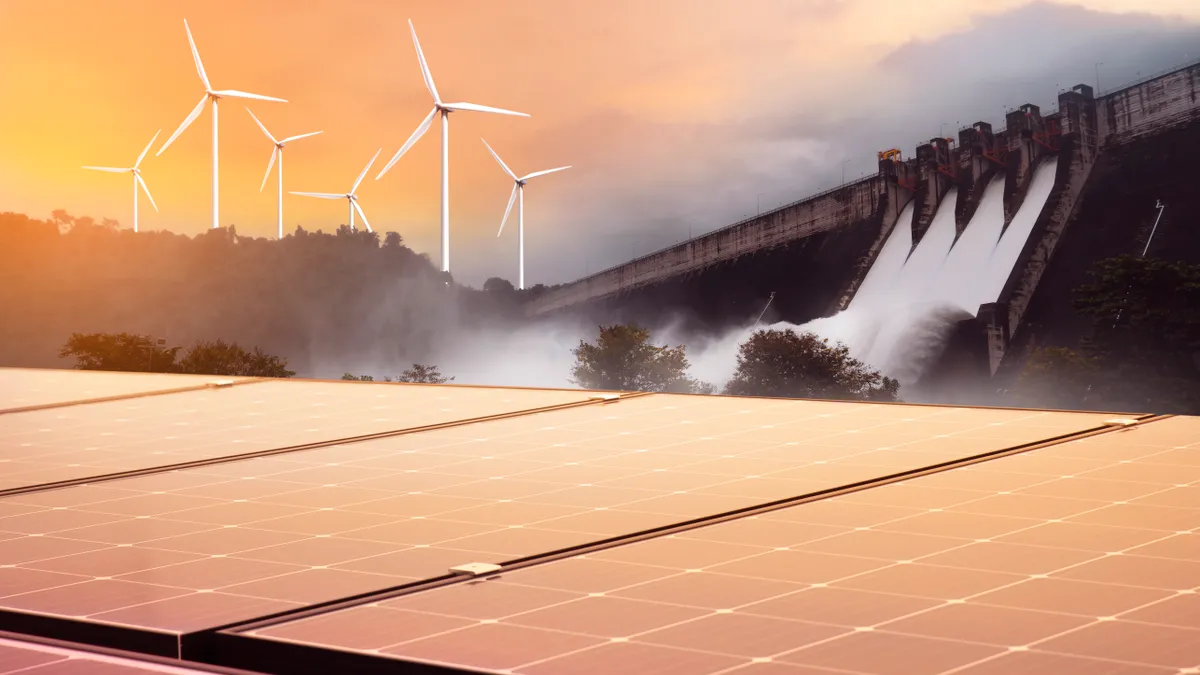Jason Grumet is CEO of the American Clean Power Association.
It’s been roughly a year since Congress made extraordinary investments to help accelerate a transition to clean energy. Over the last twelve months, private sector investment has surged, exceeding combined clean power investment for the prior eight years. However, the newfound ambition to build a clean energy economy by mid-century has exposed foundational flaws in approving and connecting energy projects that, if not addressed soon, will make this goal impossible.
First, though, the good news. In just one year, the U.S. clean energy industry has announced nearly 200,000 MW of new project capacity. While it will take a few years for all these projects to come on-line, they will generate enough clean electricity to power one in three homes in the U.S. As significant, clean energy companies are building 83 new domestic manufacturing facilities to create the components of these new forms of energy production. In addition to creating tens of thousands of new family-supporting U.S. jobs, these investments are essential to build a resilient and secure domestic supply chain for these critical technologies.
Examples of these new projects include:
- Vestas is investing $40 million in facilities in Colorado that will employ nearly 1,000 people to manufacture wind turbines.
- A shuttered steel mill in Sparrows Point, Maryland, is being rebuilt to manufacture offshore wind foundation components. US Wind is investing $115 million in the project and creating nearly 300 local jobs.
- In May, Form Energy broke ground in Weirton, West Virginia, on a new facility that will employ 750 local workers manufacturing multi-day energy storage systems.
While the politics of clean energy and climate change remain polarized in Congress, the vast majority of these investments are landing in the middle of the country and in the southeastern U.S. which have the best renewable resources, strong manufacturing bases and mostly conservative political leaders.
The bad news is that technology innovation is not being matched by innovation in federal, state and local decision making, especially around approving transmission lines that are required to connect clean energy production to major manufacturing and population centers.
Four key energy challenges the U.S. must overcome
To accelerate and sustain clean energy deployment, the nation must overcome four key challenges:
Supply Chain. The U.S. is having a long-overdue reckoning with the offshoring policies of the late 20th and early 21st centuries. The silicon solar cell was invented in America, but Chinese companies now dominate global solar module technology development and deployment. We cannot trade undue dependence on OPEC and Russian oil for undue dependence on Chinese solar inputs. Success will require on-shoring and further friend-shoring of mining, critical mineral processing and energy-intensive manufacturing. With industry and government coordination, there’s a clear roadmap for success: over 50% of wind turbines deployed in the U.S. are made domestically — and China doesn’t crack the top five in imports of critical wind products.
Permitting. Howlin’ Wolf’s lyric, “I’m built for comfort baby. I ain’t built for speed,” is an apt description of the current infrastructure approval process in the U.S. While it’s a great line, it’s abysmal industrial and climate policy. Our industry recently celebrated final approval of the SunZia transmission line, which will carry clean electricity from New Mexico to Arizona and California. This economically and ecologically sensible power line took eighteen years to approve (it will take three years to build). This pace is unacceptable in a world that is experiencing a painful glimpse of a rapidly changing climate. A sustainable economy will rely upon a vastly expanded power grid that can move clean power many hundreds of miles. In 1936, Congress passed the Rural Electrification Act to overcome economic obstacles to move power from urban to rural areas. Nearly a century later, we must come together around the national priority to move clean electrons in the opposite direction — from rural areas to urban ones.
Workforce. Needing to hire more than a million skilled U.S. workers is a good problem to have. However, the pipeline to recruit and train this new workforce does not exist. The private sector, organized labor and government leaders must develop new workforce development and apprenticeship programs that are capable of scaling for success.
NIMBY. Creating a modern, clean economy in the next thirty years will require building something new in every community. We will not succeed if we are incapable of overcoming narrow opposition to the common good.
After 30 years of largely unproductive debate about climate science and carbon taxes we now have a real plan to scale clean energy, anchored in economic growth and innovation. We have the technology, investment capital and human capital to build a clean, modern and more equitable economy. We now must confront an entrenched system of indecision and delay that is subsidizing the status quo.














